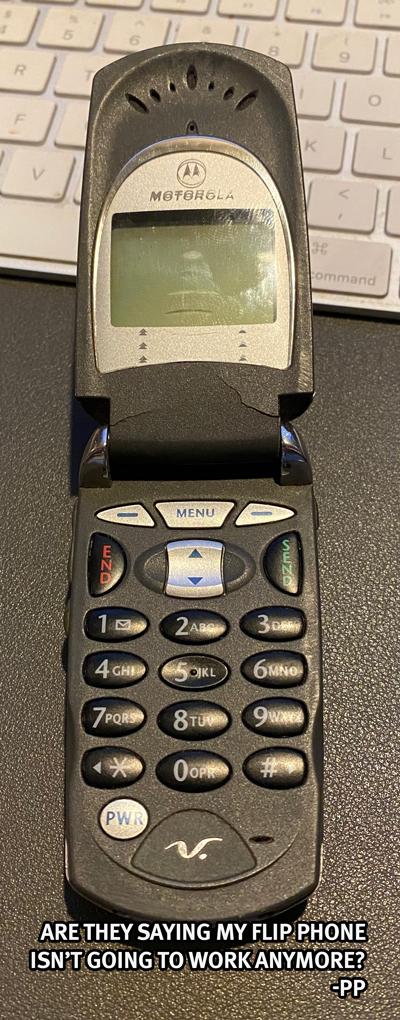Plan ahead for 3G Phase Out in 2022
 PIERRE, S.D. – The South Dakota Public Utilities Commission wants South Dakotans to be aware that all major mobile carriers, including AT&T, Verizon and T-Mobile, plan to phase out their 3G networks in 2022. The decommissioning of 3G networks, which rely on older technology, is part of a larger plan that will allow providers to focus more of their resources on building out newer networks, like 5G, to meet consumer demands instead of maintaining an older one. As a result of this change, older phones that require 3G networks to operate will lose service.
PIERRE, S.D. – The South Dakota Public Utilities Commission wants South Dakotans to be aware that all major mobile carriers, including AT&T, Verizon and T-Mobile, plan to phase out their 3G networks in 2022. The decommissioning of 3G networks, which rely on older technology, is part of a larger plan that will allow providers to focus more of their resources on building out newer networks, like 5G, to meet consumer demands instead of maintaining an older one. As a result of this change, older phones that require 3G networks to operate will lose service.
“If you have an older mobile phone, you may need to upgrade your device before mobile carriers shut down their 3G network to avoid losing service. Once your carrier makes this change, older phones, including 3G mobile phones will be unable to use data services and make or receive calls and texts, including calls to 911,” explained PUC Chairman Chris Nelson. “Some older 4G mobile phones that don’t support faster technology may also be affected,” Nelson continued.
Specific deadlines for this transition vary by company. Sprint, which is owned by T-Mobile, has announced that it will shut down its 3G network by Jan. 1, 2022. AT&T will follow suit phasing out 3G by February 2022. Verizon will end 3G service by Dec. 31, 2022. T-Mobile also plans to phase out its 2G and 3G networks, but has not yet announced a deadline.
“It’s important to understand that the dates these major carriers have provided are deadlines for retiring their 3G networks. Some may begin retiring parts of their 3G networks sooner,” said PUC Vice Chairperson Kristie Fiegen. “Keep in mind that many other carriers, like Cricket Wireless, Straight Talk and several Lifeline mobile service providers, utilize AT&T, Verizon and T-Mobile networks for service, so their deadlines may impact your service even if your contract is with a different provider,” Fiegen stated.
Phasing out older networks isn’t a new concept for wireless carriers; similar transitions have happened before. Many wireless providers shut down 2G networks in favor of building out the 4G network we now use. Benefitting from past experience, many service providers have developed programs and resources to help customers through this process.
Some carriers provide lists on their websites of devices that won’t be supported after 3G networks are decommissioned. Some mobile service providers may be offering special deals on new devices for those in need of an upgrade. Other devices may only require a software update to enable advanced services.
“The best way to ensure you don’t lose connectivity as a result of these phase outs is to do your research and plan ahead. Contact your mobile provider or consult your provider’s website for more information about their 3G retirement plan and how it may affect your service,” recommended PUC Commissioner Gary Hanson. “Be sure to consider any medical devices, tablets, smart watches, vehicle SOS services, home security systems and other devices that use cellular connectivity as a back-up when a wired internet connection goes down and other connected products that may use 3G as well,” he said.
While additional programs like Lifeline and Tribal Lifeline and Link Up don’t cover the cost of new devices, they can assist eligible South Dakotans with the cost of phone or internet services. The Federal Communications Commission’s Emergency Broadband Benefit program may also provide a temporary discount of up to $50 per month towards broadband service for eligible households during the COVID-19 pandemic. To find out more, visit the FCC’s website at https://www.fcc.gov/broadbandbenefit.
For more information on the planned phase out of 3G cellular networks, see the FCC’s guide “Plan Ahead for Phase Out of 3G Cellular Networks and Service” at fcc.gov/telephone.
– 30 –
